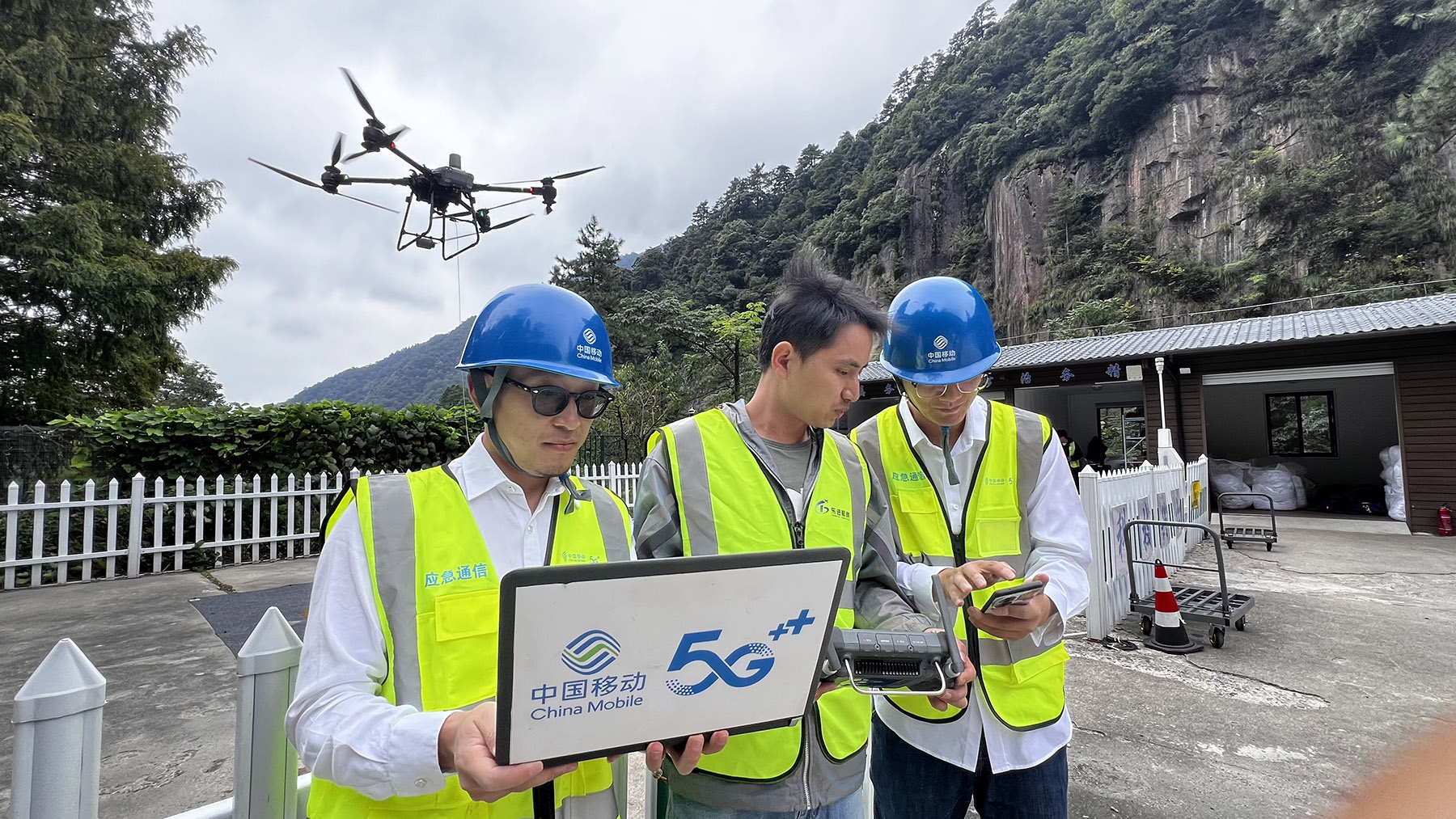At the Great Wall, visitors can order products delivered by Meituan drones

Fueled by rapidly developing technologies, scenic spots in China are getting increasingly digitalized, with visitors to a number of places of interest now being able to order food, drinks and other items that will be delivered by drones.
At the Badaling Great Wall in Beijing, tourists can order products through their mobile phones and get the chosen products such as food, water and perhaps even an umbrella or a jacket, delivered in a few minutes by drones operated by Meituan, one of China's major online service platforms, which recently launched the service.
Previously, such a delivery would have required a 50-minute walk, and this time has been dramatically shortened with the operation of drones, which can also take away garbage from tourists on the returning journeys, Meituan said.
READ MORE: Low-altitude industry gains strategic importance
Drone deliveries have also been in regular operations at domestic sightseeing spots such as in Shenzhen, Guangdong province's theme parks Window of the World and Happy Valley.
At Happy Valley in Shenzhen, drones have made the delivery time significantly shorter and driven sales volumes of takeout orders such as Starbucks coffee and fast food meals.
The drone delivery route between Meituan and Shenzhen Happy Valley starts at a shopping center that is about 1 kilometer outside of the park, with the landing point inside the park. The service has allowed tourists to order takeout without leaving the park, Meituan said.
Meanwhile, Shenzhen-based drone manufacturer DJI said it started the pilot phase of drone transportation last year in the Huangshan Mountain scenic area, and has effectively alleviated the pressure of material transportation up and down the mountain.
Between April and November, a peak season for tourism at Huangshan Mountain, one of the most famous and beautiful rugged landscapes in the country, there is the need to transport between 15 and 20 metric tons of goods per day on average, according to the scenic area.
Previously, the work could only be done manually and faced problems such as insufficient capacity, high labor intensity and difficulties in sustaining growth in transport capacity.
The domestic tourism market has gradually recovered after the COVID-19 pandemic, and the bottleneck of transport capacity has since become increasingly prominent.
Huangshan Mountain has launched a drone transport route that is 3.2 km away from the pedestrian walkway area and uses a single-lane dual-drone operation. In the period from May last year to January of this year, drones were operated 12,590 times and transported 253 tons of goods, DJI said.
Fresh materials such as meat, vegetables, mineral water and rice, as well as household waste and other materials required for the daily operation of the scenic area can be transported by drones, the company said.
The application of drones at Huangshan Mountain has enabled those who have a demand to transport products in the mountainous areas to see a possibility to address the issue, DJI said.
ALSO READ: Foreign guests tour some of province's dynamic enterprises
"The industrial development of low-altitude economy relies more on technological and industrial innovation," said Zhang Xiaonan, senior corporate strategy director of DJI. "An increasing number of new applications and life service scenarios are expected to emerge one after another, and the application of drones in those scenarios will have a long-term impact on the life of consumers."
In the past few years, Huangshan in Anhui province has launched a variety of new activities such as low-altitude tourism and carnivals for hanfu, traditional Chinese clothing of the Han ethnic group.
In the first 10 months of this year, Huangshan welcomed 82.93 million tourists, up 10.56 percent year-on-year. Over the period, it netted tourism revenue of 74.7 billion yuan ($10.31 billion), up 12.55 percent on a yearly basis, according to the local government.
Fan Feifei contributed to this story.


